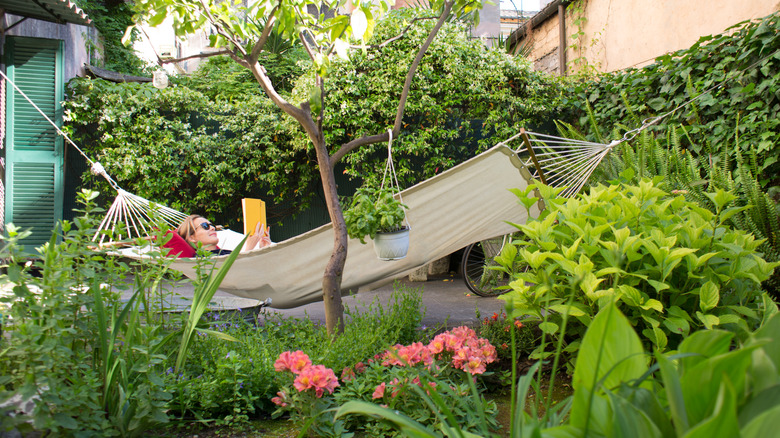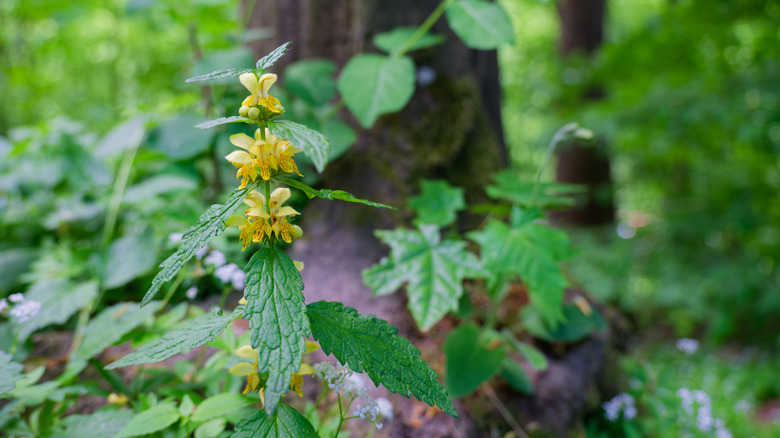This Beautiful Yellow Flower Is Actually An Invasive Weed Threatening Your Garden
A dense mat of beautiful yellow flowers shaped like grinning mouths growing from a mat of silvery leaves sounds like an excellent substitute for a lawn begging for maintenance. Even better, this candidate for your garden tolerates all sorts of cultural conditions without requiring much help to thrive. But, in the case of yellow archangel (Lamiastrum galeobdolon), looks can be deceiving. Experts at the University of Oregon unequivocally state that: "Yellow archangel is an invasive weed. It doesn't have any benefits for people and the environment." You might argue that beauty is a benefit, but any advantages of growing this noxious weed are heavily outweighed by the damage it causes as it smothers other plants.
Yellow archangel was introduced to North America from Europe and Asia for use in gardens. It's an herbaceous perennial, hardy in USDA zones 4 through 9, that propagates by seeds or stem nodes. The serrated leaves are dark green on top and a lighter green on the underside and the stems have four sides that branch readily to form thick clumps. Mature plants can be as tall as two feet. Even cultivars such as 'Hermann's Pride', have been mentioned as having a moderately invasive potential, so it's wiser to consider other fast-growing yellow flowers as a ground cover.
Getting rid of yellow archangel in your landscape
Since it can take several years to fully control yellow archangel in your garden once it's established, it's best to match the plant's aggressiveness in your eradication efforts. Pull it as soon as you see it, making sure to get all of the root so it can't resprout from bits left in the ground. Don't compost the waste or use it in any way in the landscape — it will grow back even if it appears dead. In Washington State, where the plant is now quarantined, yellow archangel easily took root in rural areas when people tossed out used hanging baskets with the plant in them, rather than disposing of them properly. When you pull up the plants, throw them away in thick trash bags designed for yard waste. Repeat the process as soon as new shoots appear. Always clean your shoes and garden tools after working with yellow archangel so you don't spread the weed to other areas in the landscape.
If the area you're clearing isn't too large, using an eco-friendly mulch or garden landscape sheeting may be effective in keeping yellow archangel at bay after the initial clearing. Some herbicides may also be successful against the plant. Use a weed-killer alternative for treating your lawn like an organic herbicide or one of the commercially available formulations made to kill yellow archangel. Read the label carefully, and follow the instructions. Keep in mind that other plants in your yard and garden will be affected by the poison and make sure you don't use herbicides near bodies of water, unless the label states that it's safe.

